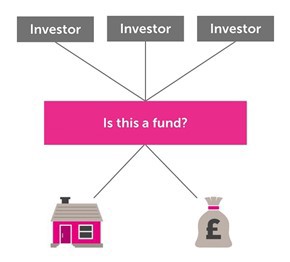This is part of a series of guides in which we examine areas of Guernsey law that frequently arise in practice. Further guides will be released weekly; click here to subscribe to receive these by email.
Answering the question 'Is this a fund?' takes up a surprising amount of an investment fund lawyer's time, no matter how and from where they have been practising. Guernsey is no different, and understanding the general principles (and subtleties) that apply – and testing your proposed structure against these early – can save a lot of time and effort.
Getting this right is important. A collective investment scheme (a fund) is required to be authorised by or registered with the Guernsey Financial Services Commission; it is a regulated structure. Failing to get a fund authorised or registered can have substantial regulatory consequences. Just as importantly, perhaps, attempting to (or succeeding in) getting a structure authorised or registered that isn’t a fund can add unnecessary time and cost.
Basic principle
The best approach is to start with this principle: if there are multiple investors investing together into a structure that will hold a number of assets, care should be taken. Proceed on the assumption that it is a fund unless an exception applies. There are of course a number of other factors to consider, which are discussed further below.
In short, if it looks anything like this:

… proceed with caution and seek advice.
Common exceptions
Unsurprisingly, the most useful exception is where the structure involves a single investor or a single asset. In either of these circumstances, the strict definition of a 'fund' is not met and therefore regulation as a collective investment scheme does not apply. It is best to treat this exception in a binary manner, rather than as a sliding scale; as soon as there is a second investor / second asset, the risk of regulatory breach arises immediately.
The other exception that commonly occurs is in relation to trading companies. Unhelpfully perhaps, this is as much a term of art as anything else, but a large conglomerate trading business (think BP) is not a fund, despite having multiple investors and multiple assets. As it is a term of art, make sure you involve some artists (in this case, funds lawyers).
The law bit
The basic principle is borne out of the provisions of the Protection of Investors (Bailiwick of Guernsey) Law, 1987 (Law). A structure will be captured by the regulatory regime to the extent it falls within the definition of a collective investment scheme set out in category 1 of schedule 1 of the Law. The definition used sets out certain characteristics of a collective investment scheme. These are:
(a) the vehicle involves pooling of investors’ money for investment in a common portfolio (this is covered by paragraph 1(1)(c)(i) of Schedule 1 to the Law) (Spread of Investors);
(b) the common portfolio holds assets intended to spread risk (this is, to an extent, covered by paragraph 1(a) of Schedule 1 to the Law) (Spread of Risk);
(c) there is no intention to exercise day to day management control over any property in which the vehicle invests (this is covered by paragraphs 1(1)(b) and 1(1)(c) (ii) of Schedule 1 to the Law); and
(d) the portfolio is managed by a professional manager, at arm’s length from the investors in the collective investment scheme (this is covered by paragraph 1(c)(ii) of Schedule 1 to the Law) (together with (c), referred to as Independent Management).
As such, a structure is likely to be a collective investment scheme for the purposes of the Law where there is a Spread of Investors, a Spread of Risk and Independent Management. However, with the rise of a number of self-managed funds, an absence of independent Management as the justification for a structure remaining unregulated should be carefully vetted; this element is of less significance that Spread of Investors and Spread of Risk.
Beyond the 'fund' itself, separate consideration of service providers is needed. While the structure may not need to be regulated as a fund, parties connected to it may need their own authorisations. For example, the general partner of a limited partnership would ordinarily need either a licence or exemption under the Regulation of Fiduciaries, Administration Businesses and Company Directors, etc (Bailiwick of Guernsey) Law, 2000. Similarly, should a Guernsey entity act as investment advisor or manager to the structure, its own licensing position will need careful consideration.
The subtleties
The Law provides a number of specific exemptions, including in relation to contracts of insurance, occupational pension schemes, time-share arrangements and franchise agreements. These apply in limited, specific ways and we recommend advice is sought before relying on them.
About Collas Crill
We are a leading offshore law firm. We are easy to do business with and give practical advice to overcome tough challenges. Through our network of offices, we practise British Virgin Islands, Cayman Islands, Guernsey and Jersey law.
About this guide
This guide gives a general overview of this topic. It is not legal advice and you may not rely on it. If you would like legal advice on this topic, please get in touch with one of the authors or your usual Collas Crill contacts.



